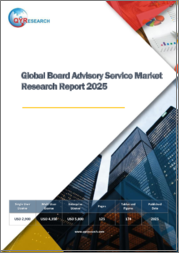
|
시장보고서
상품코드
1445903
세계의 업무 연속성 관리 : 시장 점유율(2022-2027년)Global Market Share: Business Continuity Management, 2022 |
||||||
2027년까지 9.80%의 CAGR로 세계 업무 연속성 관리 시장이 성장할 것으로 예상됩니다.
업무 연속성 관리는 대규모 중단 후에도 조직을 계속 운영할 수 있도록 하기 때문에 비즈니스 프로세스 관리의 중요한 부분입니다. 사이버 공격이나 자연재해가 발생했을 때 조명을 계속 켜두는 것이 원래의 목표였지만, 이제는 사이버 공격이나 재난으로 인한 위험을 처리하기 위한 다차원적인 위험 식별, 해결 방법 및 실행 계획을 강조하는 통합적인 분야가 되었습니다.
업무 연속성 관리(BCM)는 프로세스, 자산, 인력, 제품/서비스 등 조직의 리소스를 보호하고 재해 발생 시 운영 연속성을 보장하는 솔루션입니다. 최신 BCM 솔루션은 위험 식별, 위험 평가 및 개선, 위기 관리, 재해 복구, 엔터프라이즈 위험 관리(ERM) 등을 통해 위험을 관리하고 완화합니다. 이 솔루션은 사이버 위협, 데이터 유출, 복잡한 비즈니스 위험, 악천후와 같은 다양한 사고로부터 조직을 보호합니다. BCM 플랫폼은 통합된 종합 플랫폼을 통해 교육, 긴급 공지, 컨퍼런스 콜, 문서 관리 등 다양한 활동을 포괄하고 조정할 수 있습니다. 또한 이 플랫폼은 수동적이고 반복적인 작업을 자동화하여 비용과 시간을 절약할 수 있습니다. 이 솔루션은 ISO22301 및 FCPA와 같이 점점 더 엄격해지는 규정을 준수하는 데도 도움이 됩니다.
BCM 솔루션은 빅데이터 분석을 위한 인공 지능(AI) 및 머신 러닝(ML) 등의 기술을 통해 실시간으로 시나리오를 생성합니다. 과거에 이미 제기된 위험은 자동으로 서로 통합되어 조직의 위험 환경에 대한 전체적인 관점을 제공하는 동시에 사일로 없이 상호 연결과 의존성을 보여주는 수직적 및 횡단적 시나리오를 모두 고려합니다. AI와 머신러닝은 정형, 반정형, 비정형 데이터를 처리하고, 기존 시스템과 프로세스의 비효율성을 고려하여 재해 복구 계획을 수립하고, 중요 자산의 가치를 계산하는 데 도움을 줍니다. 변화하는 환경과 고유한 비즈니스 요구사항을 충족해야 하는 필요성으로 인해 BCM 솔루션의 수요와 진화는 앞으로 더욱 커질 것입니다.
조직이 업무 연속성 관리(BCM) 프로세스, 메트릭 및 규정 준수를 효과적으로 관리할 수 있도록 지원하는 솔루션입니다. 운영 위험과 비즈니스 영향 평가부터 업무 연속성 및 재해 복구 계획의 개발, 구현, 모니터링, 업데이트에 이르기까지 BCM 라이프사이클의 모든 단계를 관리합니다. BCM 솔루션을 통해 조직은 운영 위기에 효과적으로 대응하고 위기 후 복구 및 복구를 지원하여 전사적으로 중요한 운영의 가용성을 보장할 수 있습니다.
재해 복구 및 업무 연속성은 조직 전체에 걸쳐 지속적으로 통합되고 수용되고 있습니다. 또한 BCM 데이터는 업무 연속성 관리 프로그램이 다른 기업 기능과의 통합이 개선되었음을 보여줍니다. 가장 많이 개선된 분야는 위기/사고 관리, 재해 복구, 비상 관리, 정보 기술, 보안 정보 등입니다.
위기의 계획과 대응은 앞으로도 소셜 미디어의 영향을 크게 받을 것으로 보입니다.
소셜 미디어는 여전히 위기 관리와 커뮤니케이션에 큰 위협이 될 뿐만 아니라 엄청난 잠재력을 지니고 있습니다. 조직은 소셜 미디어를 비상 상황 전, 도중, 후에 커뮤니케이션 수단으로 받아들이고 사용해야 합니다. 특히 클라우드 기반 서비스와 관련하여 보안 문제를 계획하고 대응하는 데 있어 BC 직원의 더 많은 참여가 필요합니다.
세계의 업무 연속성 관리(BCM, Business Continuity Management) 시장 점유율 구조에 대해 분석했으며, 솔루션 개요/시장 기본 구조/도입 방법별·지역별·산업별·기업 유형별 점유율 구조/산업 관계자를 위한 제안 등 정보를 정리하여 전해드립니다.
목차
제1장 분석 개요
- 경쟁 전망(2023년)
- 주요 분석 결과 및 결론
제2장 시장 개요
- 시장 정의 및 범위
- 수익 유형
- 분석 대상 지역
- 분석 대상 업종
제3장 시장 점유율 분석
- 시장 점유율 : 시장 전체의 경우
- 시장 점유율 : 도입 방법별
- 클라우드
- 온프레미스
- 시장 점유율 : 지역별
- 캐나다
- 중앙 및 동유럽
- 일본
- 남미
- 중동 및 아프리카
- 미국
- 서유럽
- 일본·중국을 제외한 아시아(AxJC)
- 중국
- 시장 점유율 : 산업별
- 은행 및 금융 서비스
- 전자·통신
- 소매업 및 E-Commerce
- 전문 서비스
- 의료 및 생명과학
- 제조업
- 미디어 및 엔터테인먼트
- 정부·공공 부문
- 교육
- 에너지·유틸리티·기타
- 기타
- 시장 점유율 : 고객 유형별
- 중소기업
- 대기업
제4장 애널리스트의 제안
제5장 부록
LYJ 24.03.22Quadrant Knowledge Solutions Reveals that Business Continuity Management Market is Projected to Register a CAGR of 9.80% by 2027.
Business Continuity Management is a critical part of business process management, as it keeps the organization running even after massive disruptions. From its original aim to keep the lights on in the event of a cyberattack or natural disaster, it has now become an integrated discipline that emphasizes multidimensional methods of risk identification, remediation, and executable plans to handle the risk caused by a cyberattack or catastrophe.
A Business Continuity Management (BCM) is a solution that safeguards an organization's resources, such as processes, assets, people, products/services, and ensures operational continuity in the event of a disaster. Modern BCM solutions cover risk identification, risk assessment and remediation, crisis management, disaster recovery, enterprise risk management (ERM), and more to manage and mitigate risks. The solution safeguards organizations from various incidents, such as cyber threats, data breaches, complex business risks, and adverse weather conditions. A BCM platform can cover and coordinate various activities, such as training, emergency notices, conference calls, document management, etc., through a unified, comprehensive platform. The platform can also automate manual, repetitive tasks, thereby saving costs and time. The solution also helps to comply with increasingly stringent regulations such as ISO22301 and FCPA.
A BCM solution is backed by technologies such as artificial intelligence (AI) and machine learning (ML) for big data analysis to create scenarios in real-time. Risks already posed in the past are automatically integrated with one another to provide a holistic view of the organization's risk landscape while taking into consideration both vertical and transversal scenarios that show interconnections and dependencies with no silos. AI and ML help to process structured, semi-structured, and unstructured data; create disaster recovery plans by considering inefficiencies in the existing systems and processes and calculate the value of the critical assets. The demand and evolution of BCM solutions are set to grow in the future owing to the changing landscape, and the need to meet unique business requirements.
A solution that helps organizations manage business continuity management (BCM) processes, metrics, and compliance effectively. It manages all phases of the BCM lifecycle, from evaluating operational risk and its business impact; to developing, implementing, monitoring, and updating business continuity and disaster recovery plans." A BCM solution enables organizations to effectively respond to operational crises and helps them recover and restore post-crisis to ensure the availability of critical operations across the enterprise.
Disaster Recovery and Business Continuity continue to be integrated and accepted throughout the entire organisation. Additionally, BCM data demonstrate improved Business Continuity Management programme integration with other corporate functions. The areas that have improved the most include crisis/incident management, disaster recovery, emergency management, information technology, and security information.
Crisis planning and response will continue to be significantly impacted by social media.
Social media will remain a significant danger to crisis management and communications, as well as a huge potential. Social media must be accepted and used by organisations as a means of communication before, during, and after an emergency. More involvement from BC staff is needed in the planning and response to security problems, particularly in relation to cloud-based services.
Table of Contents
Chapter 01: Research Summary
- 2023 Competition Outlook
- Top Research Findings and Key Takeaways
Chapter 02: Market Overview
- Market Definition and Scope
- Revenue Type
- Geographical Regions
- Industry Verticals
Chapter 03: Market Share Analysis
- Market Share by Total Market
- Market Share by Deployment Type
- Cloud
- On-Premises
- Market Share by Geographical Regions
- Canada
- Central & Eastern Europe
- Japan
- Latin America
- Middle East & Africa
- USA
- Western Europe
- Asia Ex-Japan China (AxJC)
- China
- Market Share by Industry Verticals
- Banking and Financial Services
- Electronics & Telecom
- Retail and eCommerce
- Professional Services
- Healthcare and Life Sciences
- Manufacturing
- Media & Entertainment
- Government and Public Sectors
- Education
- Energy & Utility Others
- Others
- Market Share by Customer Types
- SMB
- Large
- Enterprise
Chapter 04: Analyst Recommendations
- Analyst Recommendations
Chapter 05: Appendix
- Research Methodologies



















